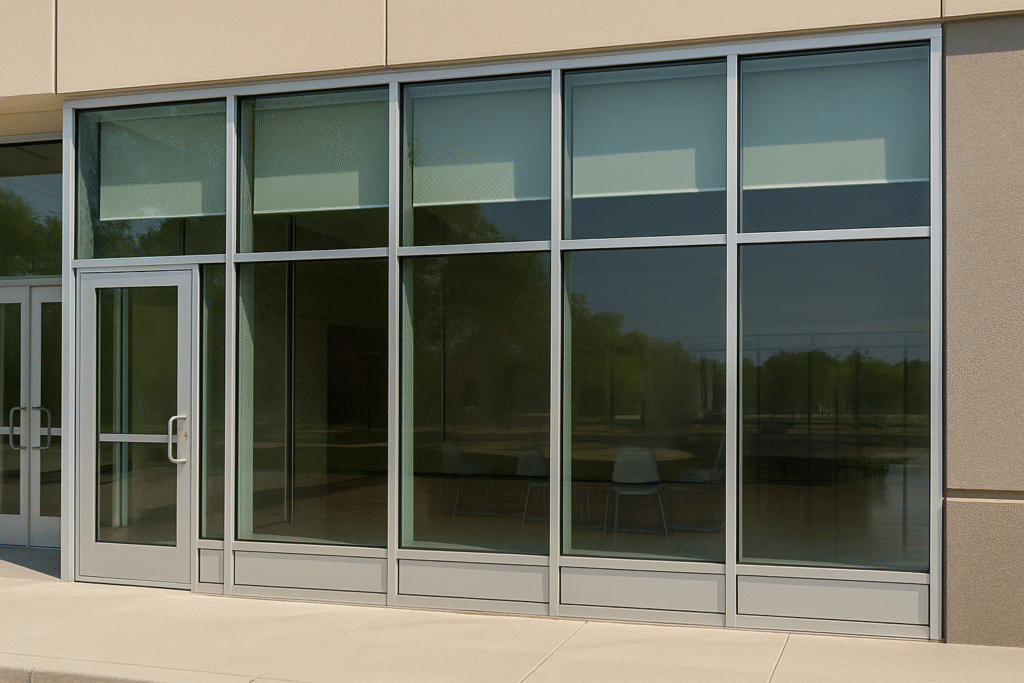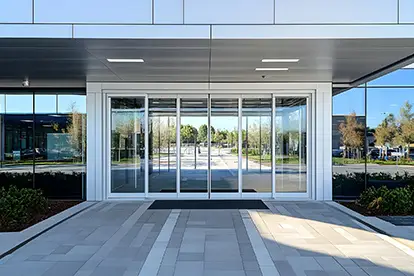9 Smart Sustainable Storefront Glass Solutions
In a competitive market, the exterior of your building conveys credibility and care. Customers form opinions about your business in seconds based on curb appeal alone. By investing in Sustainable Storefront Glass Solutions, you ensure a harmonious blend of refined style and environmental responsibility. Together, high-performance glazing and precision framing lower energy consumption, reduce maintenance costs, and foster a welcoming atmosphere for employees and visitors. This guide presents nine actionable strategies—from optimizing frame insulation to proactive repair plans—that empower you to create a long-lasting, visually stunning storefront that supports your sustainability goals and brand identity. Read on to discover how small choices in materials and processes deliver significant returns throughout the life of your installation.
Key Benefits of Sustainable Storefront Glass Solutions
Adopting sustainable storefront systems offers a range of tangible advantages. Below are four primary benefits you will notice immediately and over the long term:
- Energy Savings: Reduced heating and cooling loads translate into lower utility bills. Properly sealed double-pane glazing with Low-E coatings can cut energy use by up to 30%, making your building more cost-efficient year-round.
- Enhanced Comfort: Superior sound insulation and thermal regulation create a more comfortable interior environment, improving occupant well-being and productivity.
- Brand Reputation: Customers and stakeholders increasingly value eco-friendly business practices. A sustainable façade communicates your commitment to responsible stewardship and innovation.
- Regulatory Incentives: Many municipalities and utility providers offer rebates or tax incentives for energy-efficient upgrades. Your investment in sustainable glass and aluminum systems may qualify for financial benefits.
1. Choose High‑Performance Glazing for Sustainable Storefront Glass Solutions
Selecting the right glass is foundational to sustainable storefronts. Insulated double-pane units with low‑emissivity (Low‑E) coatings can cut heat transfer by up to 30%, dramatically lowering HVAC demands. Laminated glass provides enhanced UV protection, sound dampening, and increased security—ideal for retail and hospitality. For a balanced interior environment, specify solar‑control glasses that block infrared without sacrificing visible light. These options not only reduce energy bills but qualify for credits in green building certification programs. When planning Storefront Glass and Aluminum, compare U‑values and solar heat gain coefficients to match performance with climate and orientation.
2. Embrace In‑House Fabrication of Custom Aluminum Frames
Partnering with teams that produce custom aluminum frames GTA on-site delivers precision and speed. In-house fabrication of thermally broken profiles minimizes transportation emissions and ensures seamless integration of thermal barriers. Recycled aluminum choices further shrink your project’s carbon footprint. This approach streamlines collaboration between designers and fabricators, cutting waste and errors. By controlling every step of aluminum storefront installation, you guarantee each component adheres to your sustainability standards and project schedule.
3. Optimize Thermal Breaks for Your Storefront Glass and Aluminum System
Thermal breaks interrupt heat conduction through metal frames, reducing thermal bridging. Integrate polyamide strips or other insulating materials between interior and exterior aluminum sections. Properly engineered breaks decrease condensation risk and enhance overall energy performance of your storefront. Consistency across profiles maintains uniform thermal resistance, supporting your broader commercial glass and aluminum services objectives while improving occupant comfort.
4. Plan Proactive Storefront Glass Replacement in GTA
A scheduled storefront glass replacement GTA plan prevents seal failures from becoming costly issues. Annual inspections reveal fogging, seal compression, or frame misalignment before they escalate. Document findings with photos and performance data to support warranty claims and guide future upgrades. This preventative maintenance minimizes emergency interventions and sustains the beauty and efficiency of your investment over time.
5. Establish Rapid Emergency Storefront Glass Repair Protocols
Despite preventive measures, breakage can occur. A formal agreement with an emergency storefront glass repair provider ensures a swift 60‑minute board-up and next‑day permanent replacement. Keeping spare glass units on-hand and defining clear service levels reduces downtime and liability. Clear communication with facility managers about access and response procedures maintains business continuity and a professional appearance, even under unexpected circumstances.
6. Implement Low‑Impact On‑Site Practices for Eco‑Friendly Installations
Sustainable construction extends to installation methods. Use designated recycling bins for glass off-cuts and aluminum scrap. Stage materials off-site to reduce on-site clutter and damage. Employ battery-powered cutting tools to cut noise and eliminate fuel emissions. Schedule deliveries during off-peak hours to reduce idling and traffic impact. By adopting these low-impact practices, you showcase a comprehensive commitment to sustainability that resonates with eco-conscious clients.
Lifecycle Performance & Long-Term ROI
Evaluating the full lifecycle of your storefront materials is essential for informed investment decisions. Sustainable systems often carry higher upfront costs, but the combination of energy savings and reduced maintenance yields strong financial returns over time. Here’s how lifecycle analysis benefits your bottom line:
- Lower Operating Expenses: Energy-efficient glazing reduces utility expenses, while durable framing and hardware decrease repair frequency.
- Maintenance Cost Avoidance: High-quality seals and finishes resist wear, cutting costs associated with emergency storefront glass repair or full replacements.
- Lease & Property Value: Upgraded façades attract premium tenants and buyers, bolstering property valuations and occupancy rates.
- Rebate Eligibility: Many rebate programs target sustainable retrofits, offering rebates for storefront glass replacement GTA projects and aluminum storefront installation upgrades.
7. Enhance Daylight with Smart Glazing Patterns and Tinting
Applying frit patterns, ceramic dots, or subtle tints balances natural light admission and glare control. These treatments on high-sun façades preserve interior comfort while blocking excess heat. Combine smart patterns with insulated glazing to enhance occupant well-being and reduce reliance on artificial lighting—key goals for any Sustainable Storefront Glass Solutions project.
8. Integrate Automated Shading & Sensor Controls for Efficiency
Pair high-performance glass with motorized blinds or electrochromic glazing for a dynamic façade. Light sensors adjust shading in real-time, optimizing daylight harvesting and glare reduction. Building management systems tie shading and HVAC controls together, smoothing energy peaks and extending equipment lifespan. Such smart integration elevates both comfort and sustainability credentials in commercial storefronts.
9. Source Certified Materials for Credible Green Building Claims
Prioritize suppliers with credentials like LEED certification or Verified Environmental Product Declarations (EPDs). Responsible supply chains and transparency reinforce your green building claims. Reference resources such as the USGBC LEED program for compliance guidance and documentation standards.
Case Study: Green Café Façade Transformation
A bustling downtown café modernized its two-decade-old storefront with insulated Low‑E glazing and thermally broken frames, fabricated locally. A staged maintenance plan, including semi-annual inspections and minor seal repairs, preserved performance. The result: a 27% drop in energy costs, rave reviews in local press, and avoidance of a costly winter replacement—highlighting the power of proactive Sustainable Storefront Glass Solutions.
Frequently Asked Questions about Storefront Glass and Aluminum
How often should glazing seals be inspected?
Verify seals twice yearly—before summer and winter peaks—to catch degradation early. Schedule storefront glass replacement GTA only when performance drops below specifications.
Can existing storefronts be retrofitted?
Yes. Retrofit kits for aluminum storefront installation and updated glazing can transform older frames without full demolition. Consult specialist installers to confirm compatibility.
What defines “sustainable” storefront solutions?
Sustainability encompasses efficient materials, responsible fabrication, low-impact installation, and proactive maintenance. Combining these elements yields a storefront that performs economically and environmentally over its lifetime.
Ready to Implement Sustainable Storefront Glass Solutions?
Whether you need expert aluminum storefront installation, rapid emergency storefront glass repair, or a full façade revamp, our team delivers end-to-end support. Contact us today to schedule a no-obligation consultation and start your sustainability journey.
Ready to Implement Sustainable Storefront Glass Solutions?
Whether you need expert aluminum storefront installation, rapid emergency storefront glass repair, or a full façade revamp, our team delivers end-to-end support. Contact us today to schedule a no-obligation consultation and start your sustainability journey.





